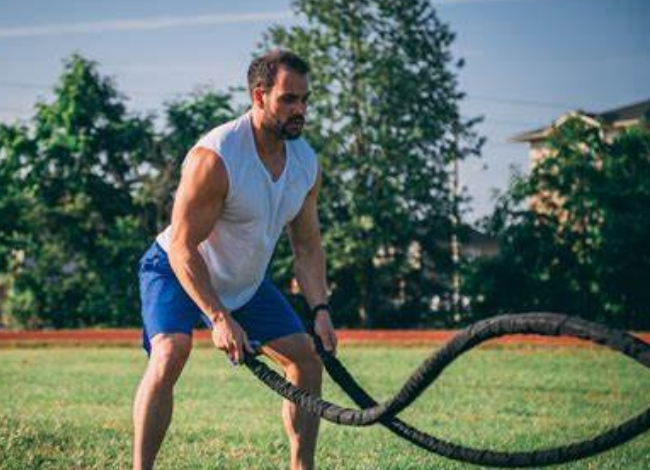In the pursuit of fitness, many people gravitate toward focusing on one specific type of exercise, such as running, weightlifting, or yoga. While these activities offer distinct benefits, a well-rounded, balanced workout routine that incorporates various types of exercises is essential for overall health and long-term fitness success. A balanced routine not only helps you achieve a more toned and stronger body but also reduces the risk of injury and prevents workout burnout.
A balanced workout routine typically includes a combination of cardiovascular exercise, strength training, flexibility, and balance work. Each of these elements plays an important role in maintaining health, improving physical performance, and enhancing your quality of life. By engaging in a variety of exercises, you ensure that you’re targeting all aspects of fitness, allowing for improved results and a more enjoyable workout experience.
One of the most important components of a balanced workout is cardiovascular exercise. Cardio workouts, such as running, cycling, swimming, or even brisk walking, get your heart rate up and improve your cardiovascular health. Cardiovascular exercise strengthens the heart and lungs, boosts stamina, and increases your ability to perform physical activities for longer periods. Regular cardio can also help with weight management by burning calories, improving blood circulation, and reducing the risk of chronic diseases such as heart disease, diabetes, and high blood pressure. Incorporating cardio into your weekly routine ensures that your heart stays healthy and you build endurance.
Another essential aspect of a balanced routine is strength training. Lifting weights or performing bodyweight exercises (such as squats, push-ups, and lunges) helps to build muscle mass, increase strength, and improve bone density. Strength training is not just for those looking to build big muscles—it’s essential for everyone, regardless of age or fitness level. By increasing muscle mass, you elevate your metabolism, making it easier to maintain a healthy weight. Additionally, building strength enhances posture, improves joint stability, and supports better overall mobility. Whether you’re using dumbbells, resistance bands, or your body weight, strength training is an important part of any fitness routine that helps you become stronger and more resilient.
Flexibility and mobility exercises are often neglected but are equally important for a well-rounded workout routine. Activities such as yoga, Pilates, or simple stretching routines help improve flexibility, reduce muscle tightness, and prevent injuries. Flexible muscles are less likely to experience strains and injuries during exercise, and they also allow you to move more freely and efficiently in daily life. Stretching also helps reduce muscle soreness after intense workouts and improves joint mobility, which can increase your range of motion and overall performance. Incorporating regular stretching or yoga sessions into your workout plan can improve your flexibility and provide a calming effect for your mind.
Balance exercises are another important component of a balanced workout routine. As we age, balance tends to decline, which can lead to falls and injuries. Performing exercises that focus on balance—such as standing on one leg, using balance boards, or practicing yoga poses—can significantly improve stability and coordination. Balance training also strengthens the core muscles, which are crucial for maintaining proper posture and preventing back pain. By including balance work in your fitness routine, you’ll enhance your ability to move with control and reduce the risk of falls or accidents.
A balanced workout routine also helps to prevent workout burnout and plateaus. Doing the same workout every day can get monotonous, and over time, your body may adapt to the stress, making it harder to see improvements. By mixing up your routine and including a variety of exercises, you keep your body challenged and engaged, leading to continuous progress. Variety not only keeps your workouts fresh and interesting but also ensures that you’re targeting different muscle groups and aspects of fitness. For example, alternating between cardio days, strength training days, and flexibility or balance-focused days helps you stay motivated and prevents overuse injuries.
Additionally, incorporating a mix of different exercises can help avoid overtraining specific muscle groups. By varying your workouts, you allow certain muscles to recover while still challenging others. This promotes balanced muscle development and reduces the risk of injury, especially from repetitive strain.
It’s also important to note that recovery is a key part of a balanced workout routine. While pushing your body during workouts is essential for progress, allowing time for rest and recovery ensures that your muscles have time to repair and rebuild. Rest days, active recovery (like walking or light yoga), and proper sleep contribute to long-term success and help you avoid fatigue or injury.
In conclusion, a balanced workout routine is essential for achieving optimal fitness results and maintaining overall health. By incorporating cardiovascular exercise, strength training, flexibility work, and balance training into your fitness plan, you’ll not only improve your physical performance but also enhance your quality of life. A balanced routine promotes strength, endurance, flexibility, and mental well-being, making it the key to long-term fitness success. Don’t forget that variety is not only beneficial for your body but also keeps your workouts fun and motivating, helping you stay committed to your fitness journey.





